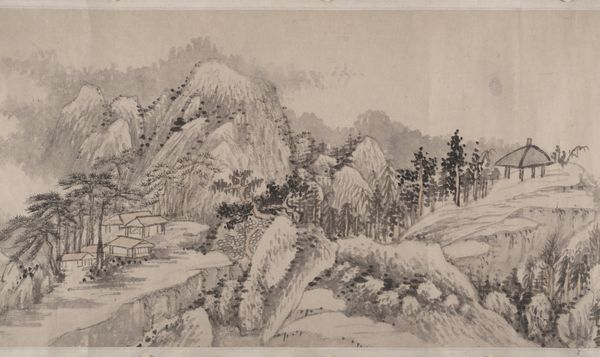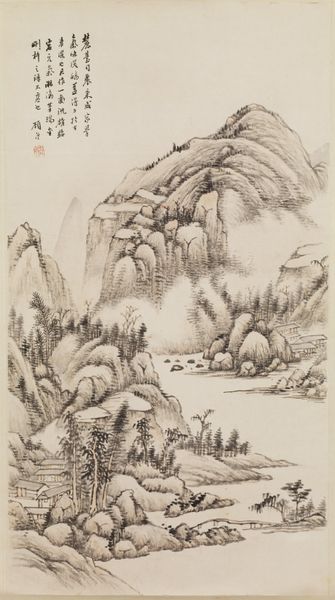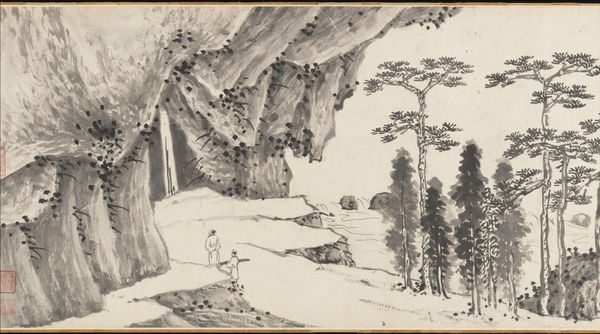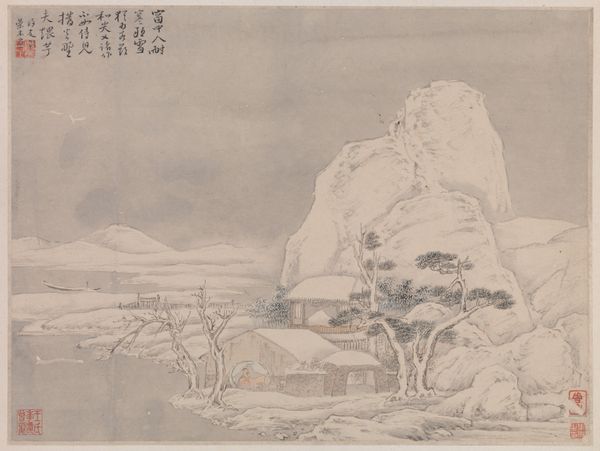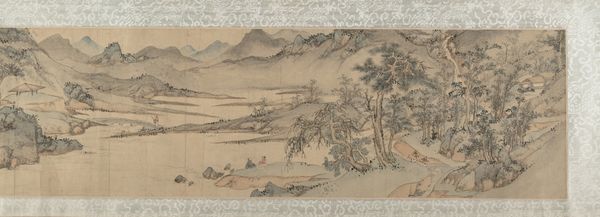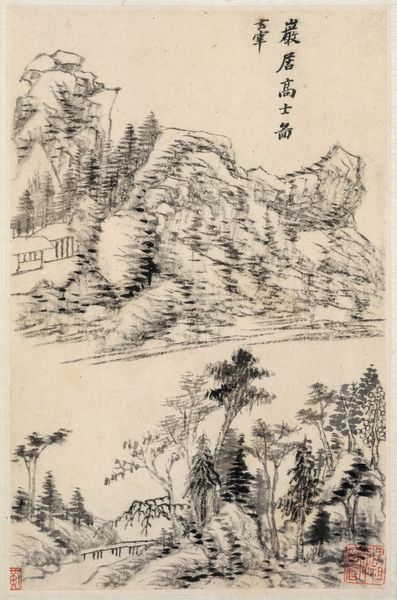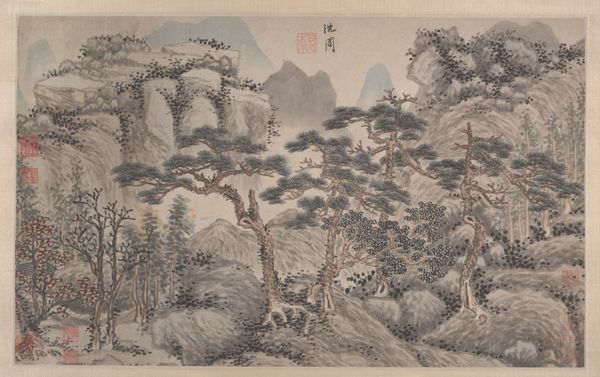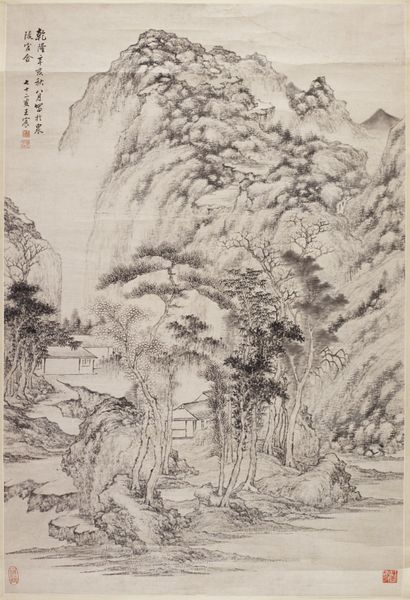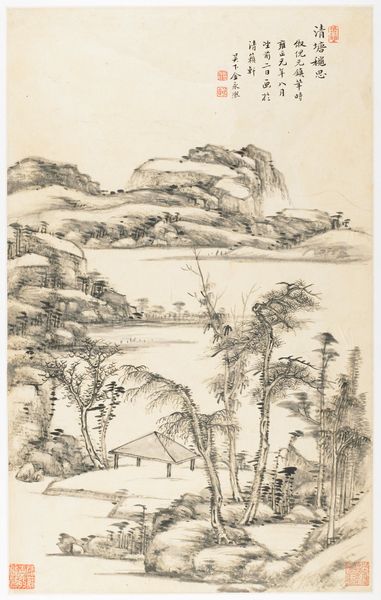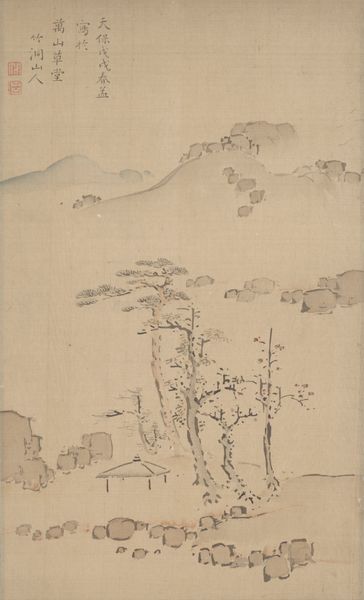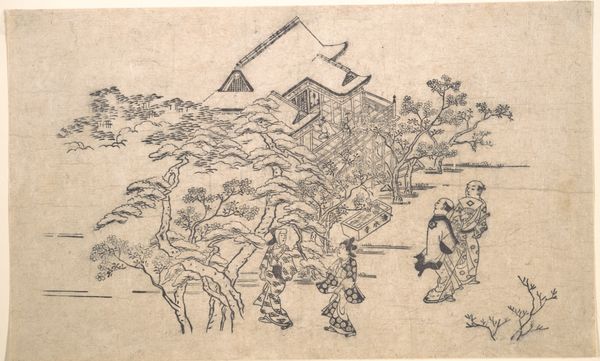
painting, watercolor
#
painting
#
asian-art
#
landscape
#
watercolor
#
line
#
realism
Dimensions: 10 9/16 × 189 15/16 in. (26.83 × 482.44 cm) (image, not including between mounts)11 3/4 × 235 5/8 in. (29.85 × 598.49 cm) (mount, without roller, includes between image mounting)
Copyright: Public Domain
Noro Kaiseki painted "Water and Trees" using ink on paper, sometime between the late 18th and early 19th century. Kaiseki, who lived during the Edo period in Japan, was deeply influenced by Chinese culture and artistic traditions, which were revered as symbols of scholarly and cultural sophistication. Kaiseki’s painting encourages a meditative escape from the rigid social structures of the Edo period. During this time Neo-Confucianism emphasized social hierarchy and isolationist policies that shaped personal expression. Kaiseki develops an alternative narrative through idealized landscapes, a world of freedom and introspection, inviting viewers to imagine life beyond social constraints. The scenes in "Water and Trees" blend natural beauty with elements of human cultivation, such as small pavilions and bridges, suggesting a harmonious relationship between humanity and nature. Kaiseki’s work reflects a personal and emotional response to nature, and a quiet rebellion against societal norms through art.
Comments
minneapolisinstituteofart almost 2 years ago
⋮
Imagine you are unrolling this scroll. Beginning at the far right, mountains rise and fall, some close, others far away. Waterways and groves of trees appear and disappear. Then, from the bottom edge of the scroll, we begin to see signs of life—a gentleman in a hut, an empty fishing boat, riverside dwellings—all urging us to slow down and ponder. As we leave the peaceful fishing village, we follow a path moving right to left in the foreground, crossing bridges and meandering around great boulders, until we reach an empty pavilion beneath mighty pine trees—at last, our destination. From within our riverside pavilion, we are offered a magnificent view of a crashing waterfall. This is the payoff, the climax of our journey. As we unroll the last few inches of the scroll, the mountains and trees disappear just as quickly as they appeared. At the very end, the painter of this scroll tells us why he created this work and why he desired to escape his home in the city and withdraw to this fantastic countryside: This summer, the fifth month of 1822, it rains continuously, so much so that contagious diseases have spread. In the deep shade of the verdant trees, I play with my brush to humor, a little, my longing for the wilderness.
Join the conversation
Join millions of artists and users on Artera today and experience the ultimate creative platform.

